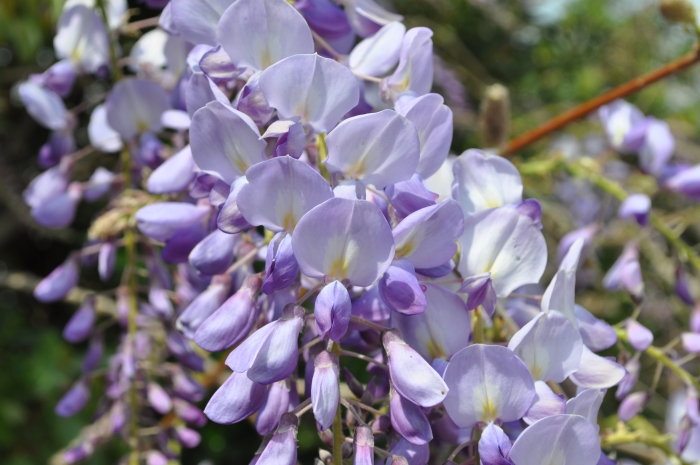Chinese Wisteria
(Wisteria sinensis)
Chinese Wisteria (Wisteria sinensis)
/
/

Josep Gesti
CC BY-SA 4.0
Image By:
Josep Gesti
Recorded By:
Copyright:
CC BY-SA 4.0
Copyright Notice:
Photo by: Josep Gesti | License Type: CC BY-SA 4.0 | License URL: https://creativecommons.org/licenses/by-sa/4.0 | Uploader: Josepgesti | Publisher: Wikimedia Commons | Title: Wisteria_sinensis,_Santa_Coloma_de_Farners.jpg | Notes: {{Information |Description={{la|Caryopteris clandonensis 'Heavenly Blue'}} {{nl|Blauwbaard of blauwe spirea}} {{en|Bluebeard, Blue-spirea, Blue-mist Shrub}} {{de|Blaublühende Bartblume}} {{fr|Caryoptéris de Clandon, barbe bleue}} |Source=own wo
















































































Estimated Native Range
Summary
Wisteria sinensis, commonly known as Chinese wisteria, is a deciduous vine native to the moist, stream banks of China and is a member of the pea family. It can grow vigorously to 20–30 m (66–98 ft) tall, with a twining growth habit that allows it to climb structures. The plant is renowned for its beautiful and fragrant flower clusters, which are violet to blue-violet, appearing in late spring and are highly attractive to pollinators. The flowers hang in pendulous racemes that can reach up to 30 cm in length, creating a stunning display. Chinese wisteria is often used to adorn walls, fences, and pergolas, and can be trained as a freestanding tree. It is less cold-hardy than its American and Japanese counterparts, suffering from dieback in colder climates and potential frost damage to flower buds in USDA Zones 5 and 6.
In cultivation, Chinese wisteria requires full sun to bloom profusely and prefers medium water with well-drained soil. It is adaptable to various soil types, including clay, loam, or sandy soils. However, gardeners should be cautious as it can become invasive, especially in the southeastern United States, where it can outcompete native vegetation. It is important to manage its growth and prevent it from escaping into natural areas. Regular pruning is necessary to control its size and shape, and to encourage flowering. Despite its invasive potential, it remains a popular ornamental plant for its stunning floral display and ability to create shaded, floral canopies.CC BY-SA 4.0
In cultivation, Chinese wisteria requires full sun to bloom profusely and prefers medium water with well-drained soil. It is adaptable to various soil types, including clay, loam, or sandy soils. However, gardeners should be cautious as it can become invasive, especially in the southeastern United States, where it can outcompete native vegetation. It is important to manage its growth and prevent it from escaping into natural areas. Regular pruning is necessary to control its size and shape, and to encourage flowering. Despite its invasive potential, it remains a popular ornamental plant for its stunning floral display and ability to create shaded, floral canopies.CC BY-SA 4.0
Plant Description
- Plant Type: Vine
- Height: 10-25 feet
- Width: 4-8 feet
- Growth Rate: Moderate
- Flower Color: Pink, Purple, White
- Flowering Season: Spring
- Leaf Retention: Deciduous
Growth Requirements
- Sun: Full Sun, Part Shade
- Water: Medium
- Drainage: Slow, Medium, Fast
Common Uses
Bank Stabilization, Bee Garden, Bird Garden, Border Plant, Butterfly Garden, Deer Resistant, Fragrant, Hummingbird Garden, Showy Flowers
Natural Habitat
Moist, stream banks of China, with violet to blue-violet flowers in late spring, used for walls, fences, and pergolas, requires full sun and well-drained soil, invasive potential in some regions
Other Names
Common Names:
Scientific Names: , Wisteria sinensis, Wisteria chinensis, Wisteria villosa, Wisteria brevidentata, Glycine chinensis, Glycine sinensis, Wistaria sinensis, Wisteria praecox, Wisteria sinensis f. alba
GBIF Accepted Name: Wisteria sinensis (Sims) DC.